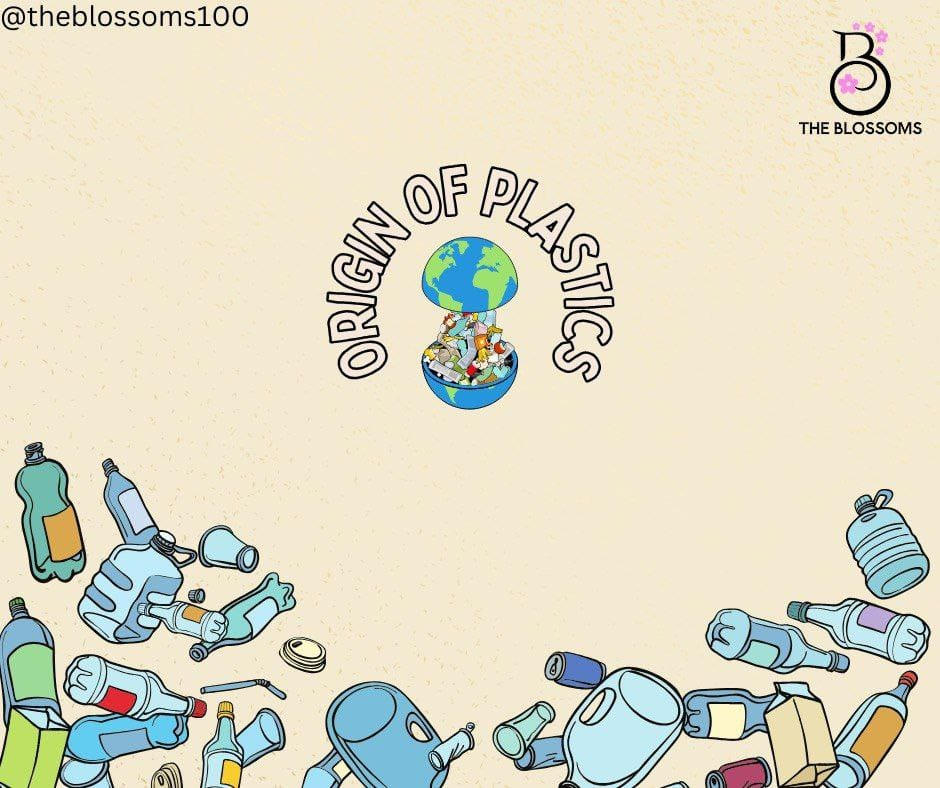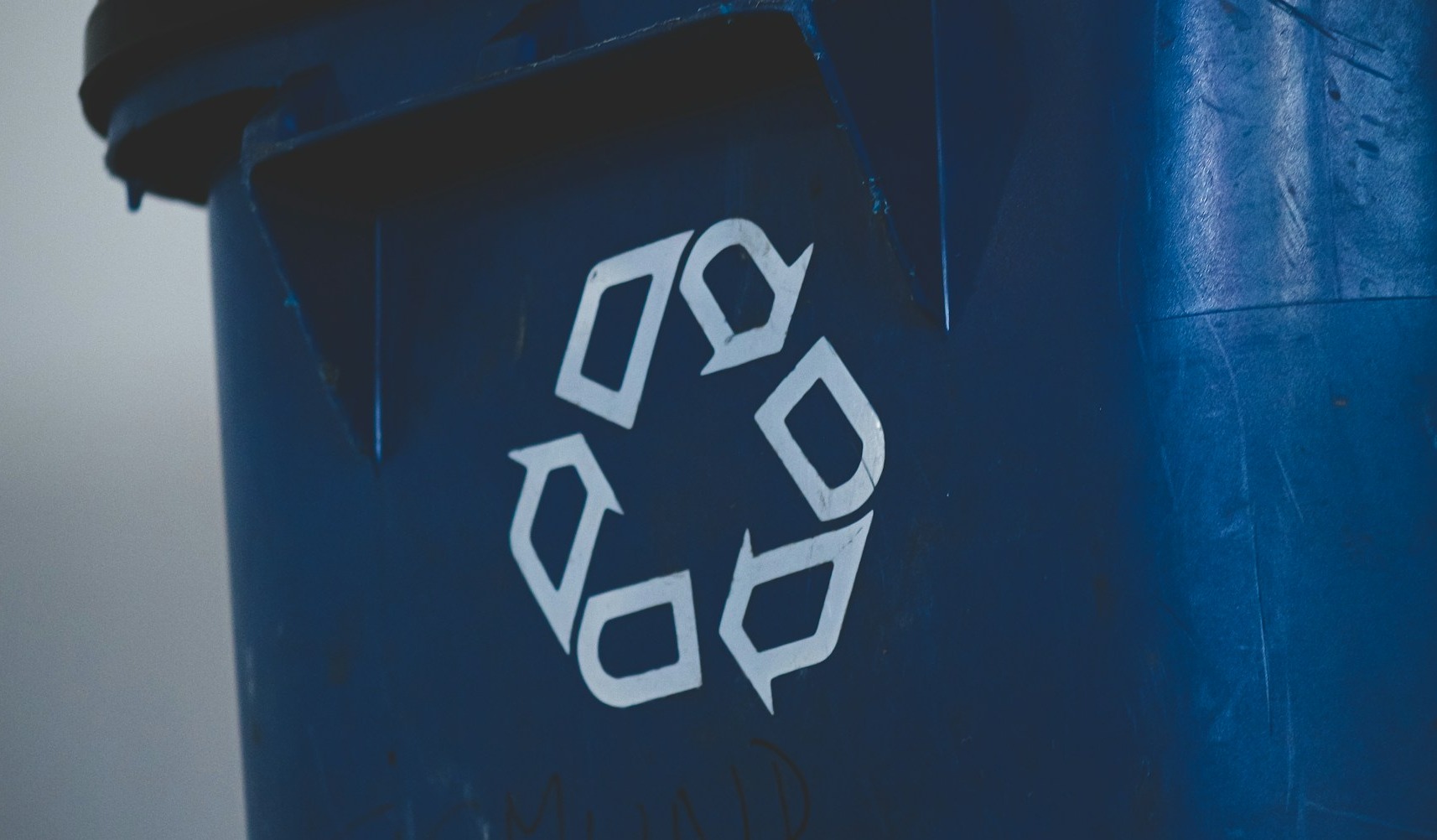နောက်ပိုင်းမှာတော့လူတွေက Synthetic Polymer တွေကိုတီထွင်လာခဲ့ကြပါတယ်။ Synthetic Polymer မှာ Carbon Atoms တွေအများကြီးပါ၀င်ပြီးတော့ သဘာ၀ကရတဲ့ Polymerတွေထက်ပိုပြီး Size ရှည်လျားပါတယ်။ Synthetic Polymer တွေဟာ ခိုင်ခံ့တယ်၊ ပေါ့ပါးတယ်၊ ပျော့ပျောင်းပြီး ကွေးနိုင်၊ ဆန့်နိုင်တယ်။ အပူပေးပြီး ကြိုက်ရာပုံသွင်းနိုင်တယ်။ ဒီ ဂုဏ်သတ္တိတွေကြောင့်ဘဲ Polymer ခေါ် Plastic တွေဟာ အသုံး၀င်တဲ့အရာတွေဖြစ်လာပြီး ကျွန်တော်တို့နေ့စဥ်ဘ၀မှာ အရေးပါတဲ့အရာတစ်ခုဖြစ်လာခဲ့ပါတယ်။ အထူးသဖြင့်လွန်ခဲ့တဲ့နှစ်ပေါင်း 50 ကျော်လောက်ကစပြီးတော့ Plastic တွေပေါများလာခဲ့ပြီး ကျွန်တော်တို့ရဲ့နေထိုင်မှုပုံစံတွေကိုပြောင်းလဲစေခဲ့ပါတယ်။
First Synthetic Plastic
1862 မှာ Alexandar Parkes က Parkesine ကိုတီထွင်ခဲ့ပါတယ်။ Parkesine က ပထမဆုံး Man-Made Plastic ဖြစ်ပါတယ်။ နောက်ထပ် Alexandar Parkes တီထွင်ခဲ့တဲ့ Buttons, Combs, Cullery Handles တွေကို Landon က Science Museum မှာ ပြသထားလို့ သွားရောက်လေ့လာလို့လည်းရပါတယ်။ 1869 မှာ John Wesley Hyattက စမ်းသပ်ရင်းနဲ့ ပရုပ်ပါတဲ့ Cotton Fiber တွေကရတဲ့ Cellulose ကိုရှာဖွေတွေ့ရှိခဲ့ပါတယ်။ ဒီ Cellulose ကရတဲ့ Plasticက လိုသလိုပုံသွင်းလို့ရပြီး လိပ်ခွံ၊ ဆင်စွယ်၊ ဦးချိုတွေလိုမျိုး ပစ္စည်းတွေတုပပြုလုပ်လို့ရတယ်ဆိုတာ တွေ့ရှိခဲ့ပါတယ်။ ဒီရှာဖွေတွေ့ရှိမှုဟာ ဆင်၊လိပ်အပြင် အခြားဦးချိုရှိတဲ့ သတ္တု၀ါလေးတွေအတွက် ထွက်ပေါက်တစ်ခုဖြစ်စေခဲ့ပါတယ်။ သဘာ၀ကရတဲ့ သစ်သား၊ ပင်စည်၊ သတ္တု၊ ကျောက်တုံး၊ အရိုးစု၊ ဦးချို၊ အစွယ်တွေရှိနေပေမဲ့ Plastic တွေကိုသုံးပြီး ပစ္စည်းတွေတီထွင်လာနိုင်တဲ့အတွက် လူတွေက Natural Resources တွေကို ထိန်းသိမ်းနိုင်ပြီ၊ လူတွေလိုအပ်ချက်အတွက် Natural Resources တွေကိုထိခိုက်စရာမလိုတော့ဘူးလို့ယူဆခဲ့ကြပါတယ်။ ဒီလိုနဲ့ Plastic သုံးစွဲမှုတဖြည်းဖြည်း စတင်လာပါတော့တယ်။
Plastic အသစ်ထွန်းကားလာမှု
1970 မှာတော့ Leo Baekeland က Bakelite လို့ခေါ်တဲ့၊ သဘာ၀ကရတဲ့ Molecules တွေလုံး၀မပါတဲ့ Fully Synthetic Plastic ကိုတီထွင်ခဲ့ပါတယ်။ Baekeland က Shellac လို့ခေါ်တဲ့ Natural Insulator ကိုအစားထိုးနိုင်မဲ့ Synthetic Plasticကိုရှာဖွေနေခဲ့တာပါ။ သူရှာဖွေတွေ့ရှိခဲ့တဲ့ Bakelite က Good Insulatorဖြစ်တဲ့အပြင် တာရှည်ခံတယ်၊Heat Resistance ဖြစ်တယ်။ ကိုယ်လိုချင်သလိုပုံဖော်ပြီးသုံးလို့ရပါသေးတယ်။ စျေးကွက်ထဲမှာဆိုရင် ''The Material of A Thousand'' လို့ခေါ်ခဲ့ကြပါသေးတယ်။ ဒီလိုမျိုး Hyatt နဲ့ Baekeland တို့ရဲ့ရှာဖွေတွေ့ရှိမှုတွေက Chemical Company တွေကို Plastic Polymer တွေရဲ့ Research နဲ့ Development Fields တွေမှာ ရင်းနီးမြှပ်နှံဖို့ လှုံ့ဆော်ပေးသလိုဖြစ်စေခဲ့ပါတယ်။
Plastic အသက်၀င်လာမှု
ဒုတိယ ကမ္ဘာစစ်အတွင်းမှာ US ရဲ့Plastic သုံးစွဲမှုကပိုပြီးကျယ်ပြန်လာခဲ့ပါတယ်။ သဘာ၀အရင်းအမြစ်တွေကို ထိန်းသိမ်းစောင့်ရှောက်မယ်ဆိုတဲ့ အကြောင်းပြချက်ကိုအစွဲပြုပြီးတော့ Plastic တွေကိုပိုပြီးသုံးစွဲလာခဲ့ကြတယ်။ Nylon ကို 1935မှာ Wallace Carothers ကတီထွင်ခဲ့ပြီး လေထီး၊ ကြိုး၊ ကျည်ကာတွေနဲ့ Helmet အောက်ခံသားအပြင် အခြားနေရာတွေမှာ အသုံးပြုခဲ့ပါတယ်။ Plexiglas လို့ခေါ်တဲ့ ကော်ကြည်ပြားတွေလည်းတီထွင်ခဲ့ကြပြီး မှန်အစားထိုးအဖြစ် လေယာဥ်ပြတင်းပေါက်ရဲ့မှန်တွေမှာသုံးခဲ့ကြပါတယ်။ ဒီနေ့ခေတ်မှာတော့ ကော်ကြည်ပြားကို Aquariums, Viewing ports in Submarines, Automobile Lenses, Spectator Protection in Sport Rinks, Aircraft Windows, Police Riot Control Vehicles, Lighthouses Lenses အပြင် အခြားနေရာတွေမှာလည်း ပေါပေါများများအသုံးပြုနေကြပါတယ်။
Plastic တွေဟာ စျေးသက်သာတယ်၊ သုံးရလွယ်ကူတယ်၊ Save ဖြစ်တယ်ဆိုပြီး သုံးလာခဲ့ကြတာနောက်ပိုင်းမှာ Plastic က Traditional Materials တွေကို Challenge လုပ်လာပြီးနောက်ဆုံးမှာ မှန်၊ စက္ကူ၊ သစ်သားစတဲ့ သဘာ၀ ပစ္စည်းတွေနဲ့ လုပ်တဲ့ အရာတွေကို အစားထိုးပြီးအနိုင်ယူသွားပါတော့တယ်။
Plastic Product တွေပေါများလာတာဟာ နှစ်တွေကြာလာတာနဲ့အမျှ ပိုပြီး ဆိုးရွားလာပါတယ်။ အခုဆိုရင် Plastic ထုတ်လုပ်မှုနှုန်းဟာတစ်နှစ်ကို 380 Million Tons ကျော်အောင်ရှိနေပြီး ဒီနှုန်းထားနဲ့ နှစ်စဥ်နှစ်တိုင်းထုတ်လုပ်နေကြတာဖြစ်ပါတယ်။ Plastic တွေအားလုံးရဲ့ 50% ကတော့ ခဏတာအသုံးပြုပြီး လွှင့်ပစ်နေကြတာဖြစ်ပါတယ်။ ခနတာသုံးပြီး လွှင့်ပစ်လိုက်ကြပေမဲ့ Plastic တွေက ကမ္ဘာပေါ်မှာ နှစ်ပေါင်းအများကြီးကြာအောင် ကျန်ရှိနေပါတယ်။ ပင်လယ်အောက်မှာနစ်မြုပ်နေတဲ့ Plastic က တစ်နှစ်ကို 10 Million Tons ထက်ပိုတယ်လို့ ''Plastic Oceans International Organization ''(Federal TaxID #81-3778043 ) ရဲ့ဖော်ပြချက်တွေအရသိရပါတယ်။ စျေးကွက်မှာ ထုတ်ပိုးမှုအတွက်သုံးနေတဲ့ Plastic ဟာဆိုရင် Plastic စုစုပေါင်းအသုံးပြုမှုရဲ့ 40%ကျော်ရှိတယ်လို့ဖော်ပြထားပါတယ်။ နှစ်စဥ်နှစ်တိုင်း Plastic အိတ်ပေါင်း 500 Billion ထိသုံးနေကြပြီး 1 Minute မှာ One Billion နှုန်းထားအထိရှိနေတယ်လို့လည်း ဖော်ပြထားပါတယ်။ ဒါဟာ တော်တော်လေး များပြားတဲ့အနေအထားလို့ပြောလို့ရပါတယ်။
Plastic ပေါများရတဲ့နောက်ထပ်တစ်ချက်ကတော့ အအေးဘူးခွံတွေဘဲဖြစ်ပါတယ်။ ဒီနေ့ခေတ်မှာဆို အအေးမျိုးစုံပေါ်ထွက်လာတာနဲ့အမျှ Plastic ဘူးခွံ၊ ပုလင်းခွံတွေဟာ အဆမတန်များပြားလာတာဖြစ်ပါတယ်။ 2014 မှာဆိုရင် Plastic နဲ့လုပ်ထားတဲ့ အအေးဘူးခွံ၊ အချိုရည်ဘူးခွံတွေကိုသုံးစွဲမှုဟာ 100.7 Billion ရှိတယ်လို့ The Container Recycling Institute ကဖော်ပြထားပါတယ်။ ဘူးခွံတွေရဲ့ 57% ကတော့ ရေသန့်ဘူးခွံတွေဖြစ်ပါတယ်။ ရေသန့်ဘူးခွံသုံးစွဲမှုဟာ 1996 မှာ 3.8 Billion ရှိနေရာက 2014 မှာဆိုရင် 57.3 Billion အထိတိုးမြင့်သွားပါတယ်။ ဒီနှုန်းထားတွေကြောင့် 2016မှာ တင်သွင်းခဲ့တဲ့ ''World Economic Forum'' အရ နောက်လာမဲ့ 2050 မှာ Plastic ထုတ်လုပ်မှုနှုန်းက 3 ဆကနေ 4 ဆအထိမြင့်တက်လာနိုင်ပြီးတော့ ပင်လယ်ထဲမှာဆိုရင် ပင်လယ်မှာရှိတဲ့ငါးလေးတွေရဲ့အရေအတွက်ထက် Plastic အရေအတွက်ကပိုများလာမယ်လို့တောင် ခန့်မှန်းခဲ့ကြပါတယ်။
ဒီအဖြစ်အပျက်တွေ၊အကျိုးဆက်တွေဟာ လူတွေရဲ့ လိုအပ်ချက်တွေကိုဖြည့်စည်းဖို့၊ လူနေမှုဘ၀တွေ ပိုသက်သာလွယ်ကူအောင်လာအောင်ဖန်တီးမှု ၊ ခနတာ စျေးသက်သာမှုစတဲ့ အချက်တွေကြောင့် Plastic ကို ပေါပေါများများသုံးစွဲမိခဲ့ကြပြီး အခုလိုနောက်ဆက်တွဲ အကျိုးဆက်တွေဖြစ်ပေါ်လာတာဖြစ်ပါတယ်။
(English version)
"Microplastics: The Invisible Threat In Our Everyday Lives" (Part 1)
Recent reports have highlighted the presence of microplastics in the cells of marine animals, particularly fish. It's now common to find plastic in various parts of the human body, including the bloodstream. People might wonder, "How does plastic enter our bodies, and what are the potential negative effects?" There are those who are uncertain about the answers and others who are aware but still concerned. Read on for a clearer understanding.
Origin Of Plastic
Plastic is known for being pliable and easily shaped. Another type of plastic is polymer, which can be found abundantly around us. For example, cellulose in the cell walls of plants is a natural polymer. Humans have been creating and using plastic for many years. Historically, polymers from animal horns were used as hand lamp mirrors, and ivory polymers were fashioned into billiard balls. Polymers from various plants and minerals have also been utilized to meet human needs.
Synthetic Plastic (Polymer)
Later on, we invented Synthetic Polymer, characterized by their longer carbon chains compared to natural polymers. These synthetic polymers are strong, light, soft, and pliable, capable of being stretched and reshaped with heat. Due to these properties, polymers known as plastics have become indispensable in our daily lives. For more than 50 years, plastic has been abundant and has significantly transformed our lifestyles.
First Synthetic Plastic
In 1862, Alexander Parkes invented Parkesine, the first man-made plastic. Items like buttons, combs, and cutlery handles created by Parkes are displayed at the Science Museum in London. In 1869, John Wesley Hyatt discovered that cellulose from cotton fibers during experimenting could be molded to mimic materials such as turtle shells, ivory, and horns. This breakthrough helped conserve elephants, turtles, and other horned animals. By using plastic, people could create items without depleting natural resources like wood, metal, stone, and bone. This innovation marked the beginning of widespread plastic use, as it was seen as a way to protect natural resources while meeting human needs.
The Rise of New Plastic
In 1970, Leo Baekeland invented Bakelite, the first fully synthetic plastic free of naturally occurring molecules. Baekeland sought a synthetic replacement for Shellac, a natural insulator. Bakelite proved to be a good insulator, durable, heat resistant, and moldable. It was marketed as “The Material of a Thousand Uses.” The discoveries of Hyatt and Baekeland spurred chemical companies to heavily invest in plastic polymer research and development.
Expansion Of Plastic
During World War II, the US scaled up plastic use to preserve natural resources. In 1935, Wallace Carothers invented nylon, used in parachutes, ropes, bulletproof vests, and helmet liners.They also invented plexiglass, an adhesive sheet developed as a glass substitute for airplane windows. Today, plexiglass is widely used in aquariums, submarine viewing ports, automobile lenses, sports rink spectator protection, aircraft windows, police riot control vehicles, and lighthouse lenses and many others.
Plastics are cheap and easy to use. Plastics became a formidable challenge to these conventional materials like paper and wood and utimately replaced those traditional materials.
The proliferation of plastic products has worsened over the years. Currently, plastic production rates exceed 380 million tons annually, with half of all plastics being used and discarded. Despite being disposed of, plastics persist in the environment for many years. According to Plastic Oceans International Organization (Federal Tax ID #81-3778043), over 10 million tons of plastic are buried under the sea. Plastic packaging accounts for over 40% of total plastic usage. An astonishing 500 billion plastic bags are used annually, equating to about one billion per minute.
Another prevalent use of plastic is in cold beverage containers. With the rise of various cold products, the number of plastic cans and bottles has soared. In 2014, the Container Recycling Institute reported that 100.7 billion cold cans and drink bottles were consumed, with 57% being water bottles. Bottled water consumption surged from 3.8 billion in 1996 to 57.3 billion in 2014. According to the “World Economic Forum” in 2016, plastic production could triple or quadruple by 2050, with the amount of plastic in the sea potentially surpassing the number of small fish.
These developments have arisen to meet human needs and simplify life. Due to factors such as low cost, plastic has been widely used, leading to significant environmental consequences.
 THE
THE 


-v1.jpg)